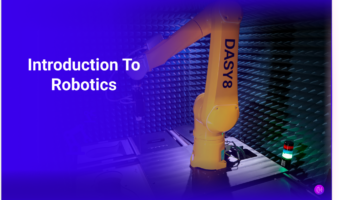About This Course
Are you ready to build and program the future?
This comprehensive course not only explores the fascinating world of robotics but also provides you with the essential mathematical and algorithmic foundations for designing, controlling, and making robots move intelligently and safely.
Module 1: Historical and Current Context
We will begin our journey in the imagination, exploring the role of robots in fiction and contrasting it with robotics in real history. We will discuss the current state of the industry, from human-like robots to autonomous vehicles (coming soon—robots that drive), and answer the fundamental question: Why do we need robots? We will test your knowledge with some quick quizzes along the way.
Modules 2 and 3: The Mathematical Foundation
For a robot to know where to go, we need to understand space. These modules are the technical heart of the course:
2D Geometry: We’ll start with the basics, defining Position and Pose in 2D and the relative relationships between objects.
3D Geometry: We’ll jump into the real world. We’ll introduce the Right-Hand 3D Coordinate Frame and delve into the representation of Pose in 3D. We’ll explore how to describe rotation in three dimensions, covering advanced concepts such as the noncommutativity of rotations, rotation angle sequences (roll-pitch-yaw), the dreaded Singularity, and more robust representations such as Axis-Angle and, crucially, Quaternions (q). Mastering these topics is essential for advanced robotic navigation.
Module 4: Intentional Motion (Paths and Trajectories)
With geometry mastered, we’ll learn how to plan motion. We will analyze how to create smooth and predictable movements using polynomial and trapezoidal trajectories in 1D, and then scale this to planning complex motions in multiple dimensions. Finally, we will address the vital task of interpolating rotation and pose in 3D to achieve natural trajectories.
Module 5: Motion Measurement (Inertial Sensors)
No robot can move without knowing how it is moving. Here we will explore the world of inertial navigation. We will break down the working principles and applications of:
Accelerometers: To measure acceleration and gravity.
Magnetometers: To find direction (compass).
Gyroscopes: To measure the angular velocity of rotation.
With this information, we will understand how a robot can estimate its own inertial navigation through the derivative of a rotation matrix (R˙), integrating all this sensory data to maintain its course.
This course will be a rewarding challenge! Get ready to go from science fiction to complex movement programming.







